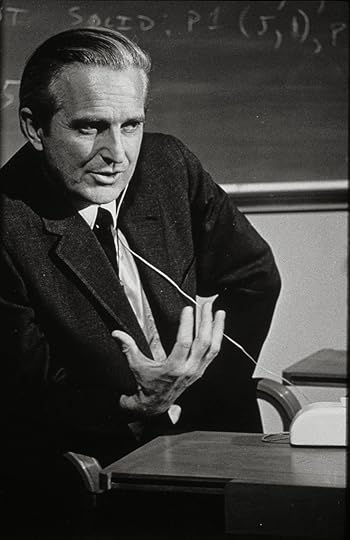Future Shock
 Forty-five years ago today, Doug Engelbart unveiled his revolutionary new invention: “The X-Y Position Indicator for a Display System.” Or, as he and his team liked to refer to their new wooden device: the mouse. “I don’t know why we call it a mouse,” he said that day. “It started that way and we never changed it.”
Forty-five years ago today, Doug Engelbart unveiled his revolutionary new invention: “The X-Y Position Indicator for a Display System.” Or, as he and his team liked to refer to their new wooden device: the mouse. “I don’t know why we call it a mouse,” he said that day. “It started that way and we never changed it.”For years Engelbart had been thinking about how to made computers adapt to people, instead of the other way around. He and his team at the Stanford Research Institute had been working on ideas to do just. On December 9, 1968, they presented them in a demonstration at a San Francisco computing conference that was astonishingly ahead of its time
In a day before email or internet, when entire companies might have just one computer (or none), Engelbart asked his audience to consider the farfetched notion of a computer on their desk responsive to their every need. Then he grabbed his prototype mouse and took them on a tour of the future. He showed them such radical things as cutting and pasting, folders, hypertext, making a graph, using different windows on the screen, even working jointly with a remote user—all of which seemed about as fantastic as a Flash Gordon death ray. People in the audience actually started climbing on stage to see him use the mouse to move around what he called a “tracking spot” on the screen.
That demonstration, recorded on video available on Youtube, is referred to as “the mother of all demos.” It not only introduced the now-ubiquitous mouse—it offered a 20/20 vision of a revolution to come.
And that is just one of the stories in The Greatest Science Stories Never Told.
 Englebart’s mouse was a block of wood with two wheels, one for up and down motion, the other for back and forth. It had three buttons on it. It worked in conjunction with a mounted to the left of his keyboard that featured five special function keys.
Englebart’s mouse was a block of wood with two wheels, one for up and down motion, the other for back and forth. It had three buttons on it. It worked in conjunction with a mounted to the left of his keyboard that featured five special function keys.
Published on December 09, 2013 14:31
No comments have been added yet.



